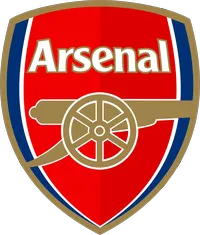

Established in
Total Trophies
Current Players
Workers from the Woolwich Arsenal armament factory founded the club in 1886. The club started humbly but rapidly grew into one of the giants of the game. Initially named Dial Square, they soon became Woolwich Arsenal before eventually dropping the first part to be known simply as Arsenal.
In 1913, the club relocated from South-East London to North London, settling in the famous Highbury stadium. This move set the foundation for the club's rise. Under the visionary management of Herbert Chapman in the 1930s, Arsenal transformed into a footballing powerhouse. Chapman's innovative tactics, such as the introduction of the WM formation and floodlights, helped the club dominate English football during that era, winning five league titles between 1931 and 1938.
After WWII, Arsenal remained competitive but reached new heights in the late 20th century. The late 1980s saw the Gunners claim league titles under the guidance of George Graham, a period known for its staunch defense. But it was the arrival of Arsène Wenger in 1996 that revolutionized the club. Wenger, with his focus on sports science, nutrition, and fluid attacking football, ushered in a golden era. The Frenchman won three Premier League titles from 1997 to 2003. However, it was his “Invincibles” team of 2003-04 who remain one of the greatest teams in football history, going an entire Premier League season unbeaten – a feat still unmatched.
Arsenal moved from Highbury to the state-of-the-art Emirates Stadium in 2006. Although financial restrictions followed due to the cost of the stadium, Wenger continued to deliver top-four finishes and FA Cup trophies, further cementing his legacy.
ScoreWaves © 2025 Copyright. All Rights Reserved.